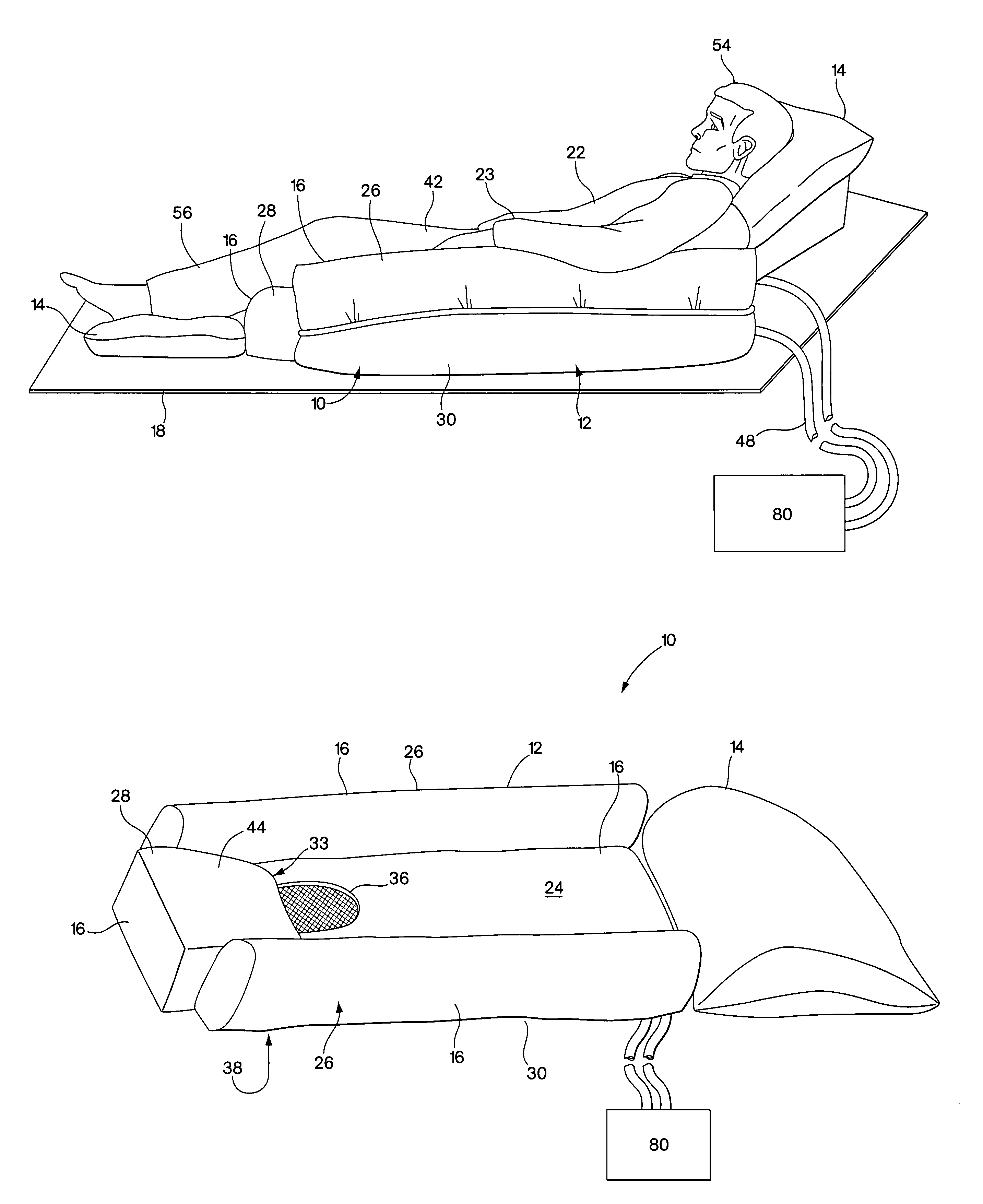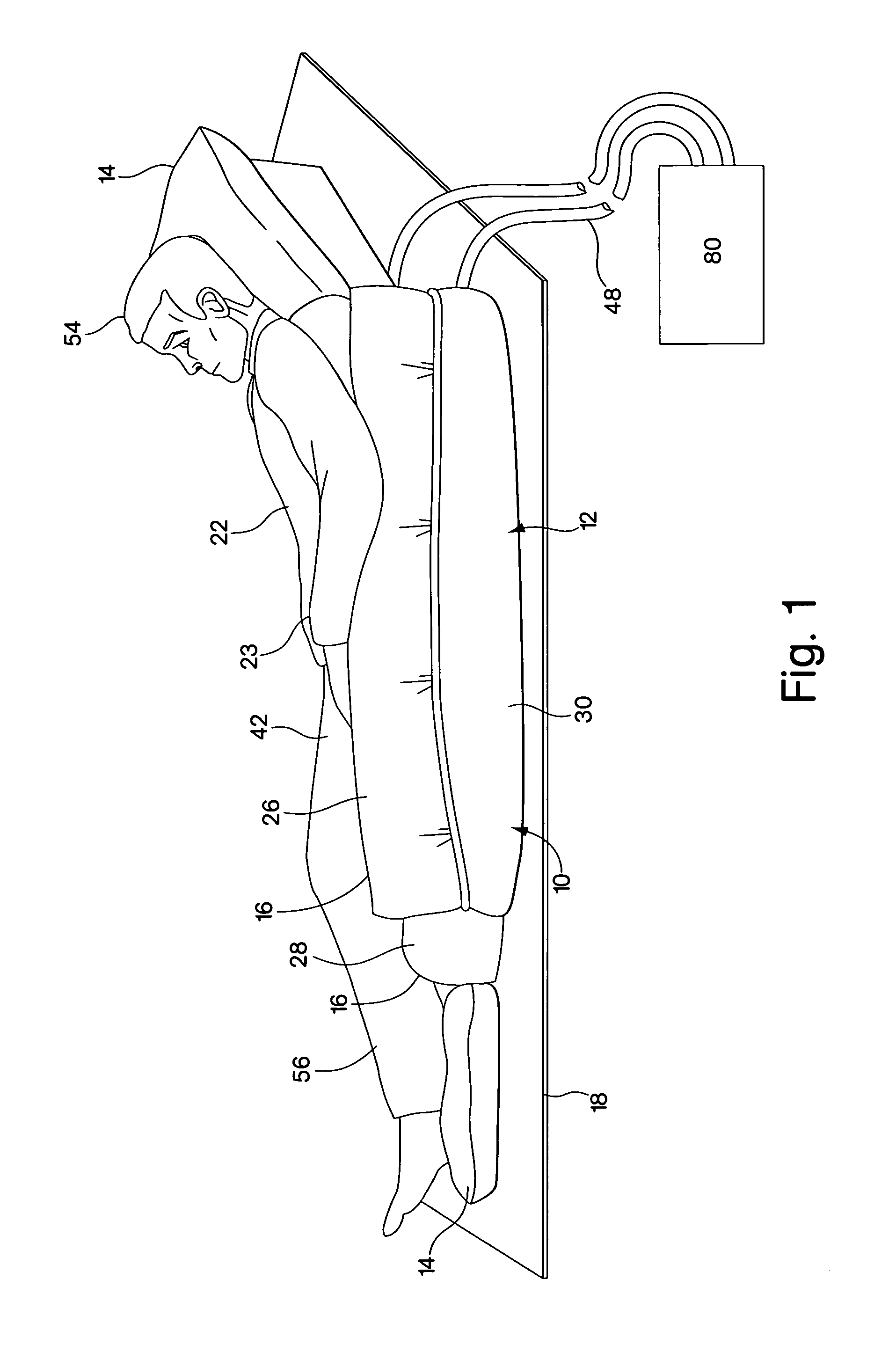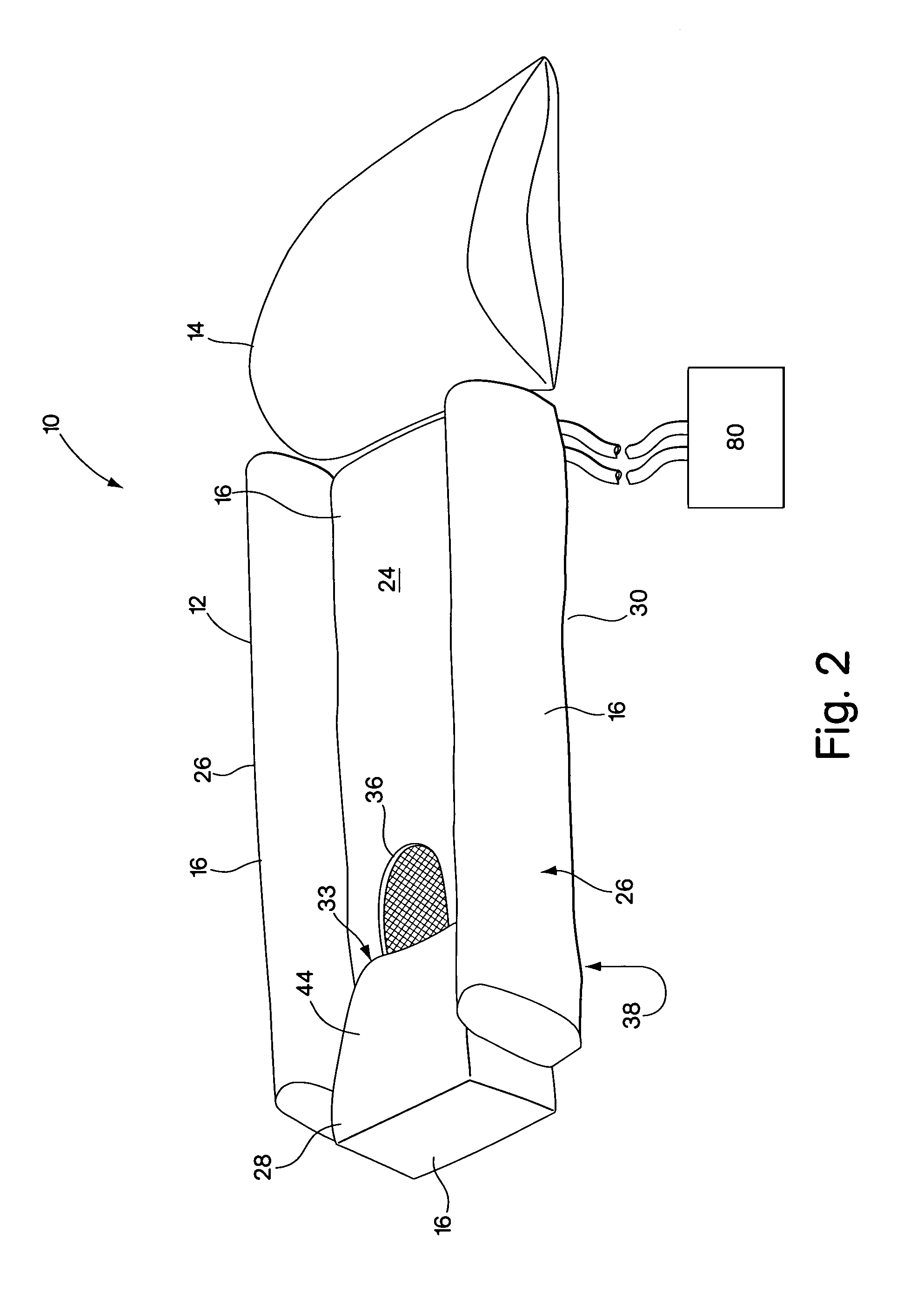Portable patient turning and lifting device
a patient and portability technology, applied in the direction of fluid mattresses, sofas, tables, etc., can solve the problems of reducing blood circulation at those pressure points, consuming resources, and reducing the blood supply to those pressure points, so as to avoid the occurrence of pressure wounds and secure the position of patients
- Summary
- Abstract
- Description
- Claims
- Application Information
AI Technical Summary
Benefits of technology
Problems solved by technology
Method used
Image
Examples
Embodiment Construction
[0039]FIG. 1 is an illustration of a patient using an embodiment of the patient turning and lifting device of the present invention. In a preferred embodiment, the patient turning and lifting device 10 comprises a body support 12 upon which a patient 20 is positioned. The body support is configured to cradle a patient's torso 22 and is configured to hold at least one inflatable bladder 30 securely between the patient's body 20 and patient supporting surface 18. The bladders are filled by fluid that is pressurized, preferably by a pump system 80 comprising at least one pump that is in fluid connection with the bladders via fluid lines 48. The pump system is preferably provided with a controller unit to modulate its operation. In combination with a solenoid valve, the pump and controller can be set to fill and empty bladders of the body support in a variety of sequences and time intervals.
[0040]Although the patient turning and lifting device of the present invention may be configured ...
PUM
 Login to View More
Login to View More Abstract
Description
Claims
Application Information
 Login to View More
Login to View More - R&D
- Intellectual Property
- Life Sciences
- Materials
- Tech Scout
- Unparalleled Data Quality
- Higher Quality Content
- 60% Fewer Hallucinations
Browse by: Latest US Patents, China's latest patents, Technical Efficacy Thesaurus, Application Domain, Technology Topic, Popular Technical Reports.
© 2025 PatSnap. All rights reserved.Legal|Privacy policy|Modern Slavery Act Transparency Statement|Sitemap|About US| Contact US: help@patsnap.com



